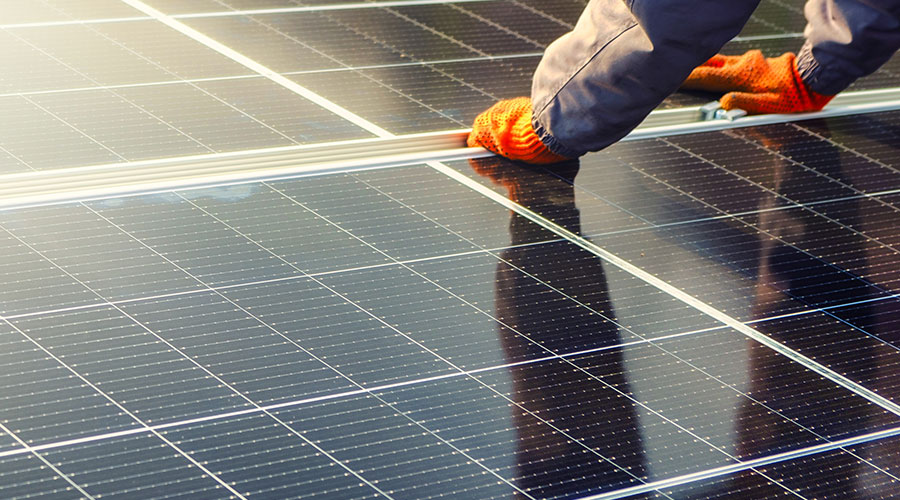Roofing Maintenance and Inspection in Severe Weather
This year alone, roofs have collapsed at a store in Georgia, a manufacturing plant in Ohio, a warehouse in Maryland, a firehouse in Virginia, an ice arena in Pennsylvania and a church in North Carolina. And with hurricane season in full swing, and winter snows looming, now is a good time for facility managers to think about ways to keep their buildings off that list.
Avoiding that fate isn't difficult, but it does require taking some time to set up an ongoing roof maintenance program, examining the roof when a storm is imminent, and inspecting again after the storm has passed.
Of course, before taking these steps, you want to know that the roof has been properly installed, says David Hawn, registered roof consultant (RRC) and president of Dedicated Roof and Hydro-Solutions, LLC. "You want a good installation and a good slope for draining." For most buildings, that means a fall of at least a quarter inch per foot of roof area, sloping toward the drain.
You also want to know that the contractor that installed the roof didn't cut corners in ways that may not be immediately apparent — say, by skimping on the use of the fasteners or the adhesive that attaches the roof to the structure, says Thomas Gernetzke, RRC and a project manager with Facility Engineering, Inc. If a storm in the area kicks up a great deal of wind, the roof may come loose easier than it otherwise would. Similarly, the roof specifications may call for a roofing membrane of a specific thickness, but a slipshod contractor may switch in a thinner or lighter-weight product.
If the facility is located in a snowy area, it pays to work with a professional engineer to determine the approximate weight the roof can hold, says Doug Stieve, RRC and principal with Wiss Janney Elstner Associates. Then, you need to pay attention to the weather reports when snow is likely, and observe the accumulation of snow at the facility, keeping an eye on the actual accumulation including any large snow drifts. "If you're getting to the (maximum) range, get an engineer out there to evaluate," Stieve says. If the weight of the snow approaches the roof's structural capacity, it becomes necessary to have the snow removed from the roof and keep people out of the building until this can occur.
It also makes sense to become familiar with the ANSI/SPRI ES1 standard, which applies to the design, specification and installation of edge materials used with low-slope roofs, says Sidney Hankins, RRC and president of Roof Design and Consulting Services. The standard focuses mainly on design for wind resistance, and any roofing or re-roofing project has to meet it, Hankins says.
Inspection Checklist
Assuming the roof has been properly installed, it pays to complete a visual inspection at least once or twice each year, says Gernetzke. This provides a baseline of information, he adds. "Then you know what things are supposed to look like."
Moreover, routine inspections can help catch small problems before they become disasters, Hankins says. For instance, examine penetrations into the roofing system, as those areas are more prone to leaks during severe weather.
Another tip regarding regular inspections: If enough time is allowed, make repairs before severe weather is ready to hit. "If you only look at the roof the day of the storm, you don't have time to react," says Dale Purvis, RRC with Thompson Engineering.
Once a regular inspection program is in place, it makes sense to complement that with a once-over when a storm is imminent. The goal here is to make sure that no debris or forgotten equipment is lying around that could become airborne and dangerous. Look for items that "might become a missile," if the winds pick up, Hankins says.
At the same time, keep an eye out for items that could clog the roof's drains or gutters, creating a backup of water, Hawn says. "When it does rain, you want water to go where you want it to go," he says.
Both low- and steep-slope roofs can be vulnerable to water damage if the drains and gutters aren't kept clear, Hankins points out. That's particularly the case when the roof is surrounded by a parapet — a low wall — along its edge. If the water isn't able to move freely into the roof drain, it will pond. In cold weather, it's liable to freeze on the roof, leading to more serious problems.
Because roof failures usually start at the perimeter, examine the roof's edges closely. Say you notice a roof curb that's not secure. You'll need time to either secure it, or hire a contractor to do this. Otherwise, the unsecured portion "lets the wind have a point to grab. You get a zipper effect, where it tends to pull a larger area off," Purvis says.
Also part of preparing the roof for a severe storm is taking care of the rest of the structure, Hankins says. If the windows or doors break during the storm, air pressure inside the building can build, and contribute to roof failure. So, when you board up windows before severe weather, you're also helping to reduce the likelihood of roof failure.
"Studies have shown that the increased pressure inside, combined with uplift from outside, are a major cause of roof failure," Hankins says. Large warehouses are particularly susceptible to this, given the sizes of both the buildings themselves, and the openings, such as larger doors near loading docks.
Related Topics:












